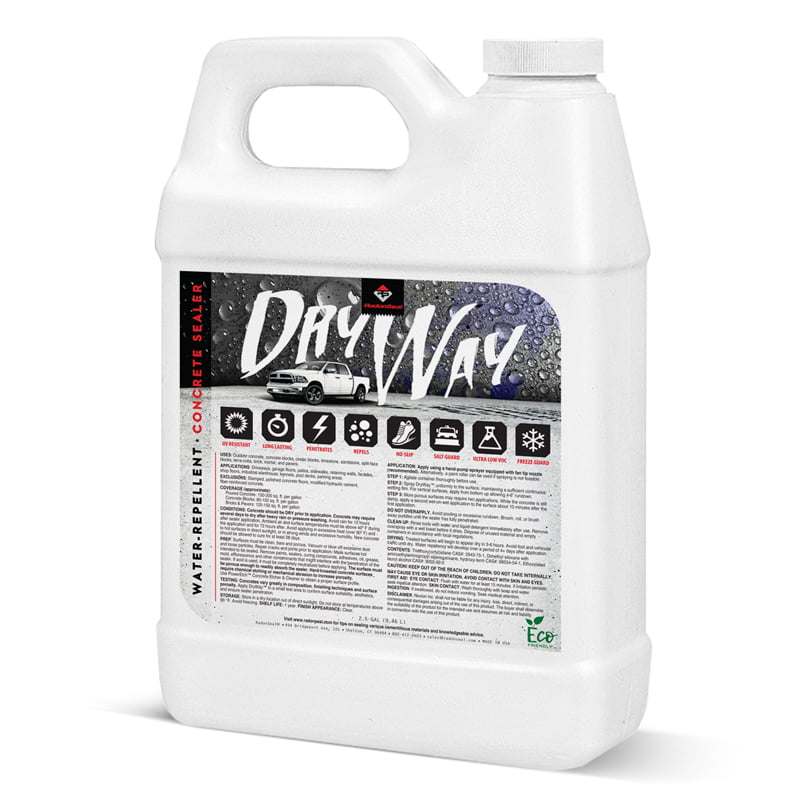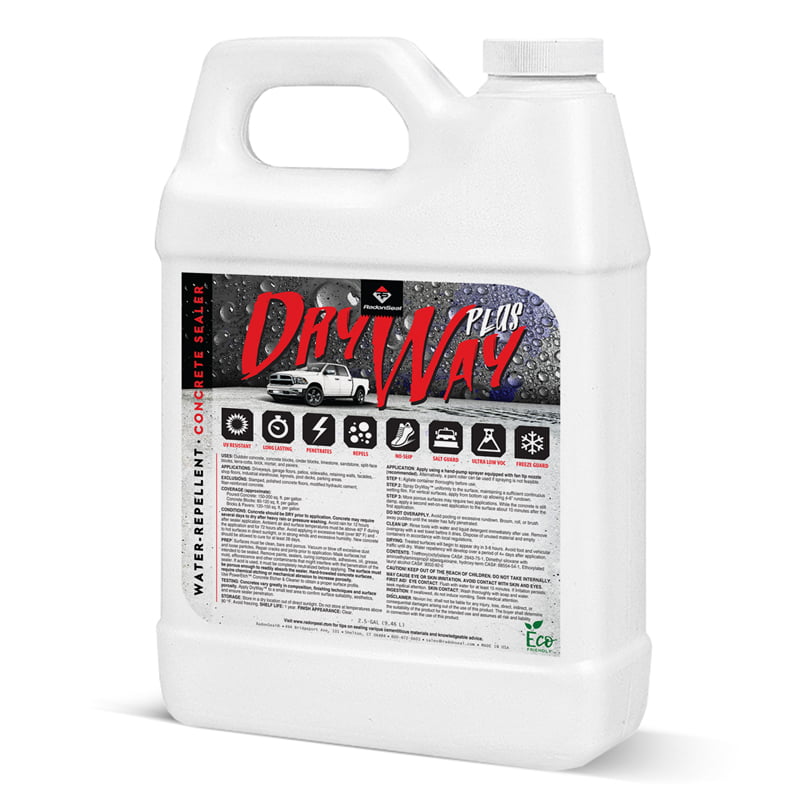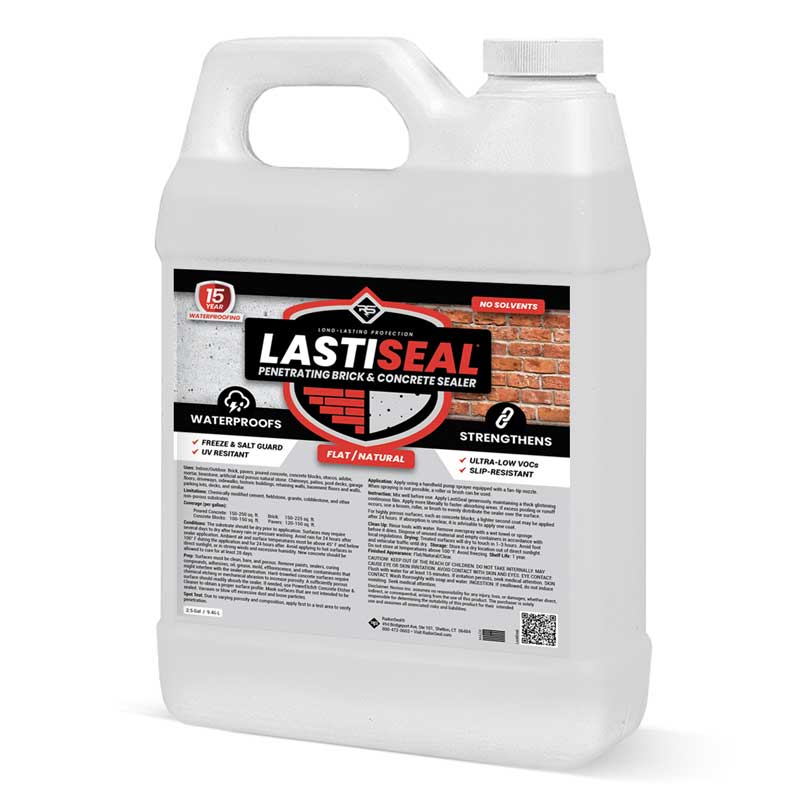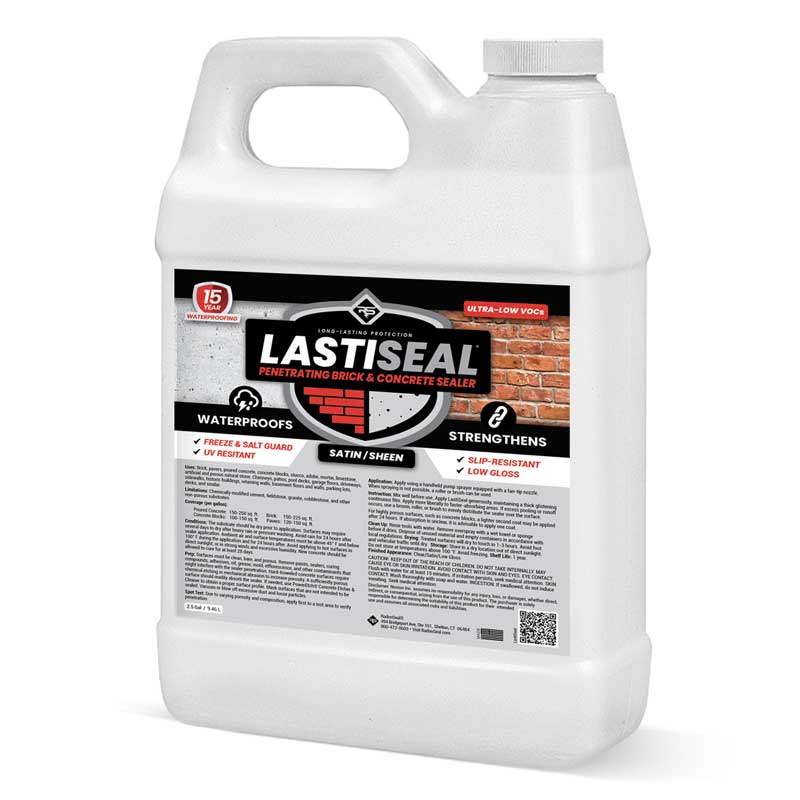
Customer Inquiry
The Problem: Moisture and Efflorescence on Garage Floors
With a new vehicle bringing more rainwater and snowmelt into the garage, many homeowners notice a common issue: efflorescence, the white, chalky residue left behind when moisture causes minerals to rise to the surface of the concrete. If you’re looking to protect your garage floor from moisture without relying on an epoxy coating, the good news is that there are better long-term solutions.
Garage floors are constantly exposed to water from rain, melting snow, hose runoff, and even high humidity. If untreated, concrete absorbs moisture, which can result in surface efflorescence, mold, or structural damage over time. Epoxy coatings, while popular, are not ideal for all situations; they’re expensive, time-consuming to apply, and prone to failure if excessive moisture and efflorescence are trapped below the surface.
Epoxy Coatings: Attractive but Trap Moisture
While epoxy generally performs well at repelling positive-side water and fluids such as rainwater, snowmelt, hose water, automotive fluids, and oil, it can be problematic on garage floors susceptible to groundwater. Moisture can wick upward through the concrete, and because epoxy forms a non-breathable barrier, trapped moisture beneath the surface can lead to blistering and peeling. Although epoxy can resist water to a degree, excessive pressure can exceed its limits and cause coating failure. Even if moisture pressure is minimal, the resulting efflorescence can still compromise the appearance and integrity of the coating. Key drawbacks of epoxy coatings for garage floors include:
-
Moisture-related failure – On slabs without vapor barriers, epoxy coatings often fail prematurely due to trapped moisture.
- Efflorescence – Even if the issue isn’t the amount of water trapped beneath the surface, the purging of salts (efflorescence) caused by moisture can easily push through and pop off an epoxy coating.
-
Challenging maintenance – Spot repairs and upkeep can be difficult for homeowners to manage effectively.
-
Costly rework – Severe damage may require full removal or sanding of the existing coating before reapplication.
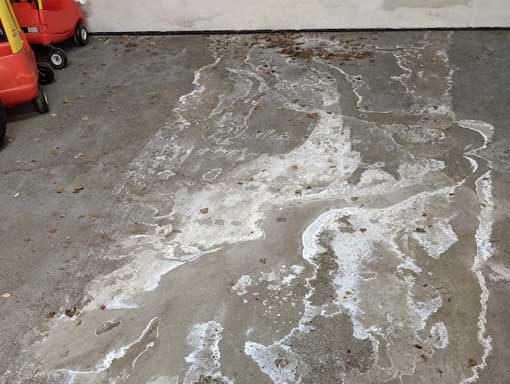
The infiltration of water into the capillary pore structure of concrete promotes the migration of soluble salts, which subsequently crystallize on the surface as efflorescence.
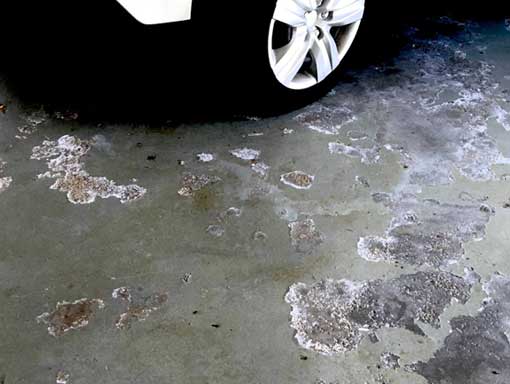
Efflorescence migrating from the interior of the concrete substrate, causing degradation of the epoxy coating on the surface.
Use a Penetrating Sealer for Long-Lasting Protection Against Efflorescence
A penetrating concrete sealer is a smarter, lower-maintenance, and more cost-effective alternative to applying a two-component epoxy system. Unlike epoxy and clear surface coating products, penetrating sealers are absorbed into the concrete, filling its pores and capillaries to block water intrusion from within, without forming a film on the surface. By limiting deep water penetration, these sealers help prevent efflorescence, the white, powdery deposits caused when water carries salts to the surface as it evaporates.
However, not all penetrating sealers provide water repellency. For sealing garage floors against positive-side water, the best choice is a penetrating sealer with strong water-repellent properties. Today, the most common and cost-effective option is a silane/siloxane-based penetrating sealer, which chemically bonds within the concrete matrix, repelling surface water while remaining fully breathable to prevent trapped moisture and the efflorescence problems it can cause.
Another appropriate option is a polyester-polyurethane penetrating sealer, which not only resists water intrusion but also increases surface strength, helping to improve the concrete’s durability against freeze-thaw cycles, road salts, deicing chemicals, cracking, spalling, abrasion, and other wear.
Best Sealers for Garage Floors – Protection Against Water & Efflorescence
DryWay Water-Repellent Concrete Sealer is a water-based silane/siloxane penetrating sealer designed for long-lasting protection of concrete garage floors. Penetrating up to ½ inch below the surface, DryWay chemically bonds within the concrete matrix to create a breathable, hydrophobic barrier that repels/beads rainwater, snowmelt, and automotive fluids, without trapping moisture. This deep protection helps prevent efflorescence by reducing water absorption and stopping salts from migrating to the surface. With no surface film to peel, blister, or fade, DryWay maintains the natural appearance of the concrete while delivering years of durable moisture protection.
-
Penetrating silane/siloxane formula – Water-based. Seals up to ½ inch below the surface.
-
Superior water repellency – Beads surface water, protecting against rain, snowmelt, and automotive fluids.
-
Prevents efflorescence – Stops salts from migrating to the surface.
-
Breathable protection – allows vapor to escape, preventing trapped moisture.
-
Lasting results – DryWay provides up to 5 years of durable water repellency, while DryWay Plus delivers extended protection for up to 10 years.
- Not paintable – DryWay is not compatible with epoxy or paint coatings applied afterward and will not allow proper adhesion.
DryWay Concrete Sealer
Buy Direct
Get It on Amazon
DryWay Plus Concrete Sealer
Buy Direct
Get It on Amazon
LastiSeal Brick & Concrete Sealer is a high-performance, building industry-spec’d, water-based polyester-polyurethane penetrating sealer that offers both water resistance and surface strengthening for garage floors. Its unique formula penetrates deeper into the concrete, sealing pores and capillaries while hardening the surface to improve resistance against abrasion, cracking, spalling, road salts, and freeze-thaw damage. By blocking water intrusion at the source, LastiSeal helps stop efflorescence before it starts, ensuring a cleaner, more attractive garage floor.
-
Polyester-polyurethane penetrating sealer — a proprietary formula that surpasses most common silane/siloxane and silicone sealers in performance.
-
Dual protection – resists water intrusion and reinforces surface durability.
-
Efflorescence control – blocks deep moisture that causes salt deposits.
-
Surface hardening – protects against abrasion, cracking, and spalling.
-
Breathable, natural finish – no surface film to blister or peel.
- Paintable – Penetrates deeper than typical silane/siloxane sealers, allowing for reliable adhesion of epoxy and acrylic paints after application.
LastiSeal • Flat
Buy Direct
Get It on Amazon
LastiSeal • Satin
Buy Direct
Get It on Amazon
Summary
Homeowners struggling with moisture or efflorescence on garage floors often turn to epoxy or clear surface coatings, but these can trap water and worsen the problem over time. The most effective solution is a breathable, penetrating water-repellent sealer—such as DryWay or LastiSeal—which soaks into the concrete, repelling surface water while still allowing the slab to breathe. This helps prevent efflorescence, reduces water damage, and protects the floor without creating a surface film that can peel, blister, or trap moisture.
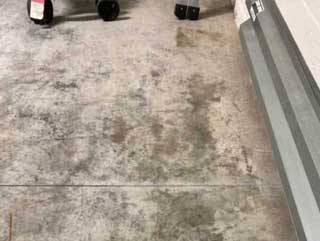
Negative-Side Water & Efflorescence Protection
Protect epoxy coatings from negative-side water pressure and efflorescence damage with RadonSeal Waterproofing Concrete Sealer.

Non-Acid Efflorescence Remover
Prepare surfaces for sealing with a safer, non-acidic cleaner that dissolves white, chalky salt deposits and rust stains from concrete, brick, and masonry.
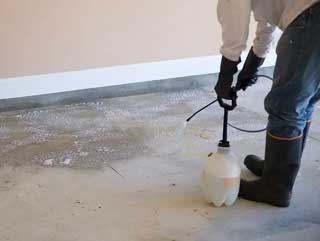
Maximum Concrete Waterproofing Protection
Apply Ion-Bond Armor Concrete Sealer after RadonSeal for the ultimate protection against water vapor transmission, capillary water seepage, and efflorescence.
